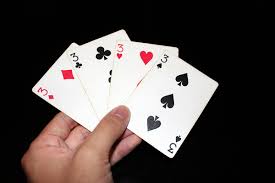Rummy 2 Players How Many Cards, is a versatile card game that can be adapted for different numbers of players, including two. While the basic principles of rummy remain consistent across variations, the number of cards dealt and specific rules can vary depending on the version of the game being played. This article explores the standard dealing practices for two-player rummy games and offers insights into how the number of cards dealt affects gameplay.
Basic Rules of Rummy for Two Players
Rummy is a game where the objective is to form valid combinations of cards known as melds. Melds can be either sets (three or four cards of the same rank but different suits) or runs (three or more consecutive cards of the same suit). The game involves drawing and discarding cards to improve your hand and eventually declare when you have formed valid melds.
Number of Cards Dealt in Two-Player Rummy
In a two-player rummy game, the standard dealing practices are as follows:
- Decks Used:
- Typically, a single standard deck of 52 cards is used. Some variations may include jokers, which act as wild cards.
- Number of Cards Dealt:
- For Each Player: In most two-player rummy games, each player is dealt 10 cards from the shuffled deck.
- Stockpile and Discard Pile: The remaining cards are placed face down to form the stockpile. The top card of the stockpile is turned face up to start the discard pile.
- Gameplay:
- Players take turns drawing a card from either the stockpile or discard pile and then discarding one card to end their turn. The game continues until one player forms the required melds and declares.
Dealing Variations for Two-Player Rummy
While the 10-card deal is standard in many rummy variants, there are some variations that might use different numbers of cards or additional decks. Here are a few examples:
- Gin Rummy:
- Number of Cards: In Gin Rummy, a common variation played by two players involves dealing 10 cards to each player. The rest of the deck is used as the stockpile, with one card turned face up to start the discard pile.
- Indian Rummy:
- Number of Cards: In Indian Rummy, which is often played with two decks of 52 cards, each player is typically dealt 13 cards. This variant involves more complex strategies and scoring.
- Oklahoma Rummy:
- Number of Cards: In this variant, each player might be dealt 7 or 10 cards, depending on the specific rules being followed.
Impact of the Number of Cards on Gameplay
- Strategic Depth:
- The number of cards dealt affects the strategic depth of the game. Fewer cards mean fewer possible melds and a faster-paced game, while more cards allow for more complex strategies and longer gameplay.
- Hand Management:
- With 10 cards, players must carefully manage their hand to form valid melds while keeping track of their opponent’s moves. More cards increase the number of possible combinations and require more strategic planning.
- Game Duration:
- Fewer cards generally lead to shorter games, as players can form melds more quickly and declare sooner. More cards result in longer games with more opportunities for strategic play.
Tips for Playing Rummy with Two Players
- Focus on Meld Formation:
- With 10 cards, prioritize forming melds as early as possible. This reduces the number of unmatched cards and improves your chances of declaring first.
- Observe Your Opponent:
- Pay close attention to the cards your opponent draws and discards. This information can help you make better decisions about which cards to keep and which to discard.
- Manage Your Hand:
- Keep track of your deadwood (unmatched cards) and aim to minimize its value. This is crucial for both declaring and minimizing penalties.
- Plan Your Moves:
- Plan your draws and discards strategically. Avoid discarding cards that might help your opponent and focus on improving your hand efficiently.
Conclusion
Rummy for two players is a delightful and strategic card game that can be enjoyed with variations in the number of cards dealt. While 10 cards per player is a common standard, different rummy variants and house rules may use different numbers of cards. Understanding these dealing practices and their impact on gameplay can enhance your rummy experience, whether you’re a seasoned player or new to the game. By adapting your strategy to the number of cards and employing thoughtful tactics, you can enjoy a rewarding and competitive game of rummy with a partner.




